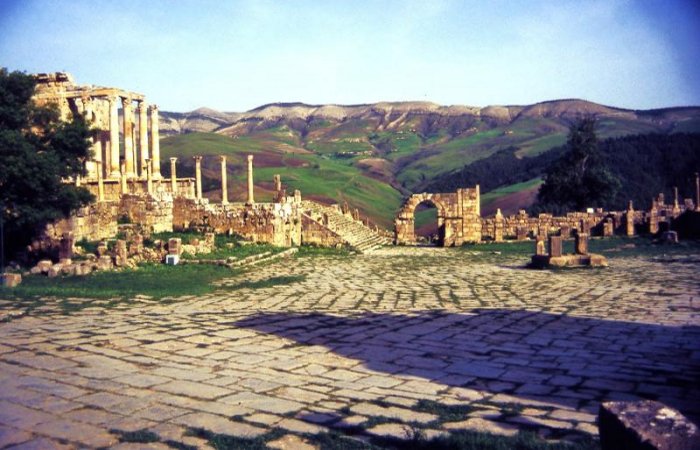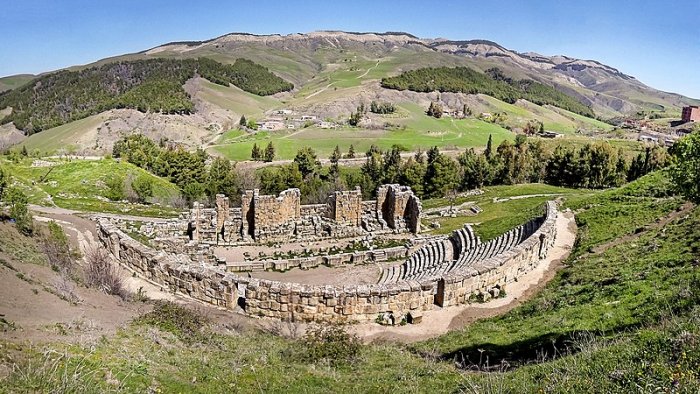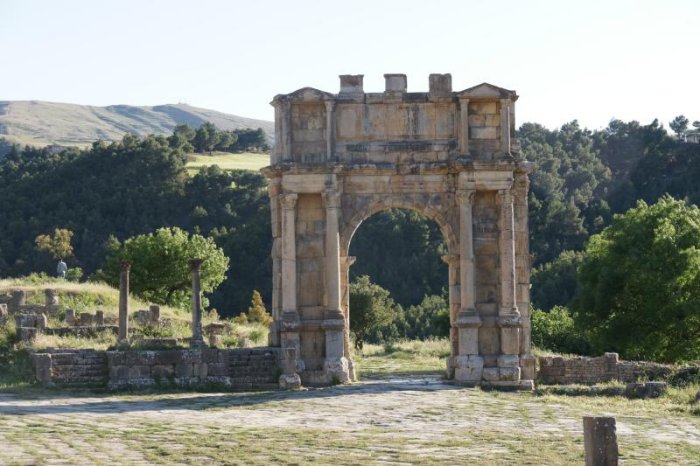Djémila – Lost City Of The Ancient Kingdom Of Numidia
Jan Bartek - AncientPages.com - When Albert Camus (1913 -1960) wrote about Djémila, a ruined Roman city in the mountains of Northern Algeria, he said this beautiful long-abandoned place is inhabited by the wind alone.
Camus wrote in Noces (Nuptials) that when you walk among the city's ancient ruins, you can hear the wind which "pounces fitfully on the remains of the houses, on the immense forum that extends from the triumphal arch to the temple." He described the ancient lost city of the Numida kingdom as a "great cry thrown out by the lugubrious and solemn stones at the mountains, the sky, and the silence."
Ancient lost Roman city Djémila. Credit: Yves Jalabert - CC BY-SA 2.0
Today a dead city, Djémila was once a vivid place where people watched the theater and visited temples and basilicas. The sudden decline of Djémila remains a mystery. Still, archaeologists excavating at the site have discovered "broken statues, evidence of fire and absence of precious metals among the ruins suggest the city may have been pillaged." 1
But who could have destroyed this historical ancient city in North Africa?
Camus wrote about his experiences in Djémila in 1936, but it has taken scholars many years to learn about this place's history. Only recently have archaeologists uncovered the history of Djémila that, because of its unique adaptation of Roman architecture, became a UNESCO World Heritage Site.
The Berber City Cuicul In The Ancient Kingdom Of Numidia
Excavations revealed that Djémila was founded around 96 A.D. Its original Berber name was Cuicul.
The city, built about 900 meters (3,000 ft) above sea level, was part of the ancient Kingdom of Numidia.
"The first Algerian kingdom, Numidia, was established by Berber tribe chief Micipsa in 106 B.C. Soon after that, it fell under the rule of the Romans. For a brief period in the 5th century the Vandals, a Germanic tribe, invaded the kingdom but were pushed out by the Romans again. In the 7th century, the Arabs invaded North Africa, bringing with them a new religion, Islam. In Algeria they were resisted by a woman leader, Kahina, the high princess of a tribe supposedly converted to Judaism., but eventually the Berbers became a province of the Umayyad caliphate. The Arabs, however, remained largely an urban elite." 2
Ancient Roman Buildings Still Stand In Djémila
The structures in Djémila have withstood the test of time. When the Duke of Orléans visited the ancient city of Djémila in 1839, he found the triumphal arc so magnificent that he wanted to transport the monument to Paris. For unknown reasons, his project was abandoned, and the arch remained in the same place it has always been. Today, Djémila can boost by having some of the most extraordinary Roman architecture in North Africa.
Djémila's Roman theater. Credit: habib kaki - CC BY 3.0
The ancient ruins offer evidence Djémila was a city filled with activity. The city had its own Senate and Forum. "Around the beginning of the 3rd century, it expanded beyond its ramparts with the creation of the Septimius Severus Temple, the Arch of Caracalla, the market and the civil basilica." 3
"In the third century, the city numbered some then thousand inhabitants, who can be imagined going about their business, perambulating from their domus to the temples and the two covered markets, whose counters are still in place." 1
There are many Christian buildings in Djémila. Among them are a cathedral, as well as a church and its baptistry. Archaeologists have unearthed startling mosaics at the site, many of them depicting mythological tales and scenes of daily life. The city was abandoned after the fall of the Roman Empire around the 5th century and 6th century, but as mentioned at the beginning, there are also indications it was also pillaged. Perhaps some local tribes stole whatever they could after Djémila was abandoned by its residents.
Arc of Caracalla (Djemila). Credit: Yves Jalabert - CC BY-SA 2.0
Djémila means in Arabic the 'Beautiful One', and the name is suitable because the city is truly a Roman beauty. When Muslims reached Djémila, they respectfully abstained from building there. The ancient Roman ruins were preserved for future generations. One does not need to have much imagination to picture what the city must have looked like before being abandoned.
Djémila is an ancient Roman jewel in North Africa.
Updated on August 27, 2022
Written by Jan Bartek - AncientPages.com Staff Writer
Copyright © AncientPages.com All rights reserved. This material may not be published, broadcast, rewritten or redistributed in whole or part without the express written permission of AncientPages.com
Expand for references- Aude de Tocqueville - Atlas of Lost Cities: A Travel Guide to Abandoned and Forsaken Destinations
- "Algeria: From FLN to FIS and Beyond." Insight Turkey, no. 5 (1997): 119-27.
- UNESCO - Djémila
More From Ancient Pages
-
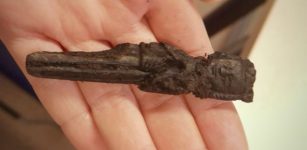 Strange Medieval Figurine With A Crown On The Head And A Falcon On The Arm – Is It A King Or A Queen?
Archaeology | Dec 16, 2021
Strange Medieval Figurine With A Crown On The Head And A Falcon On The Arm – Is It A King Or A Queen?
Archaeology | Dec 16, 2021 -
 Spread Of Early Farming Across Atlantic Coast Of Europe – In New Light
Archaeology | Apr 27, 2020
Spread Of Early Farming Across Atlantic Coast Of Europe – In New Light
Archaeology | Apr 27, 2020 -
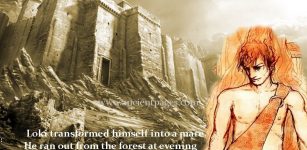 Asgard Walls Built By Giant Master Mason And Birth Of Magical Horse Sleipnir
Featured Stories | Apr 19, 2018
Asgard Walls Built By Giant Master Mason And Birth Of Magical Horse Sleipnir
Featured Stories | Apr 19, 2018 -
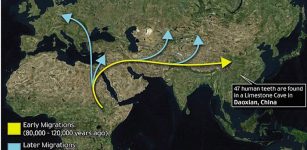 Fossil Teeth Reveal: Humans Were Present In Asia ‘20,000 Years Earlier’ Than Previously Thought
Archaeology | Oct 15, 2015
Fossil Teeth Reveal: Humans Were Present In Asia ‘20,000 Years Earlier’ Than Previously Thought
Archaeology | Oct 15, 2015 -
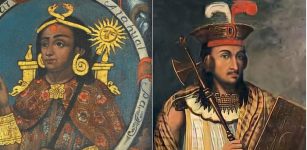 Mystery Of The Lost Golden Chain Of Huayna Capac: Will The Ancient Inca Treasure Ever Be Found?
Artifacts | Dec 30, 2020
Mystery Of The Lost Golden Chain Of Huayna Capac: Will The Ancient Inca Treasure Ever Be Found?
Artifacts | Dec 30, 2020 -
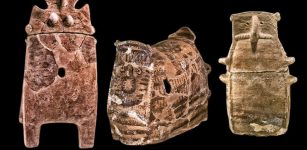 Blue Eyed People In Northern Israel 6,500 Years Ago: New DNA Results
Archaeology | Aug 22, 2018
Blue Eyed People In Northern Israel 6,500 Years Ago: New DNA Results
Archaeology | Aug 22, 2018 -
 Facial Reconstruction Of Ancient Inhabitants Of Sagalassos Make Them Almost Real
Archaeology | May 31, 2019
Facial Reconstruction Of Ancient Inhabitants Of Sagalassos Make Them Almost Real
Archaeology | May 31, 2019 -
 Sinister Manchac Swamp And The Chilling Curse Of Julia Brown
Featured Stories | Aug 25, 2021
Sinister Manchac Swamp And The Chilling Curse Of Julia Brown
Featured Stories | Aug 25, 2021 -
 Is Mysterious Herlaugshaugen The Ship Burial Of Viking King Herlaug?
Archaeology | Jul 11, 2023
Is Mysterious Herlaugshaugen The Ship Burial Of Viking King Herlaug?
Archaeology | Jul 11, 2023 -
 Ivar The Boneless: Famous Viking And Son Of Ragnar Lodbrok
Featured Stories | Jun 6, 2016
Ivar The Boneless: Famous Viking And Son Of Ragnar Lodbrok
Featured Stories | Jun 6, 2016 -
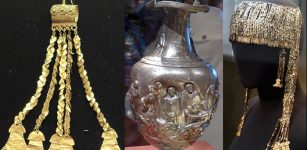 Priam’s Treasure – Authentic Trove From Homeric Troy Or Deception?
Artifacts | Jun 11, 2021
Priam’s Treasure – Authentic Trove From Homeric Troy Or Deception?
Artifacts | Jun 11, 2021 -
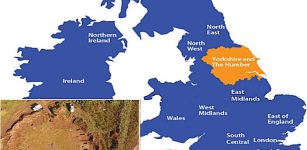 Circular-Shaped 4000-Year-Old Wooden Henge Discovered In Yorkshire, Historic County of Northern England
Archaeology | Jan 3, 2018
Circular-Shaped 4000-Year-Old Wooden Henge Discovered In Yorkshire, Historic County of Northern England
Archaeology | Jan 3, 2018 -
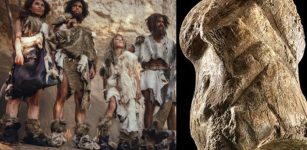 51,000-Year-Old Bone Carving Shows Neanderthals Were Artistic Long Before Humans Arrived
Archaeology | Jul 6, 2021
51,000-Year-Old Bone Carving Shows Neanderthals Were Artistic Long Before Humans Arrived
Archaeology | Jul 6, 2021 -
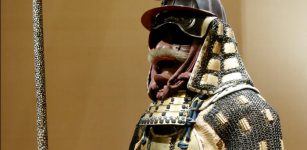 Samurai – Powerful Skilled Warriors Who Loved Music, Art And Poetry
Featured Stories | Dec 9, 2017
Samurai – Powerful Skilled Warriors Who Loved Music, Art And Poetry
Featured Stories | Dec 9, 2017 -
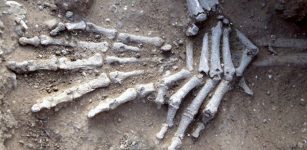 4,500-Year-Old Skeletons Found In SW China
Archaeology | Apr 19, 2016
4,500-Year-Old Skeletons Found In SW China
Archaeology | Apr 19, 2016 -
 Caribbean Silk Cotton Tree And Its Dangerous Spirits In Myths And Legends
Featured Stories | Jan 29, 2024
Caribbean Silk Cotton Tree And Its Dangerous Spirits In Myths And Legends
Featured Stories | Jan 29, 2024 -
 Unusual Object With Crosses And Enigmatic Runes Discovered In Sweden
Archaeology | May 16, 2018
Unusual Object With Crosses And Enigmatic Runes Discovered In Sweden
Archaeology | May 16, 2018 -
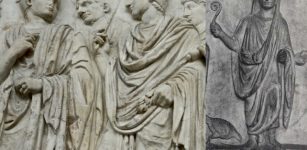 5 Different Types Of Priests In Ancient Rome – Their Role And Responsibility Explained
Ancient History Facts | Jan 30, 2018
5 Different Types Of Priests In Ancient Rome – Their Role And Responsibility Explained
Ancient History Facts | Jan 30, 2018 -
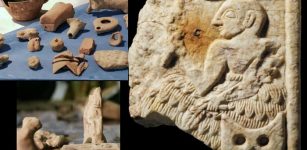 Hundreds Of Thousands Of Sumerian Artifacts Have Been Stolen From Iraq’s Museums And Archaeological Sites
Artifacts | Dec 7, 2020
Hundreds Of Thousands Of Sumerian Artifacts Have Been Stolen From Iraq’s Museums And Archaeological Sites
Artifacts | Dec 7, 2020 -
 Dangerous Anomaly Inside Mysterious European Mountain Remains Unexplained – Examining Evidence – Part 2
Featured Stories | Mar 17, 2021
Dangerous Anomaly Inside Mysterious European Mountain Remains Unexplained – Examining Evidence – Part 2
Featured Stories | Mar 17, 2021

